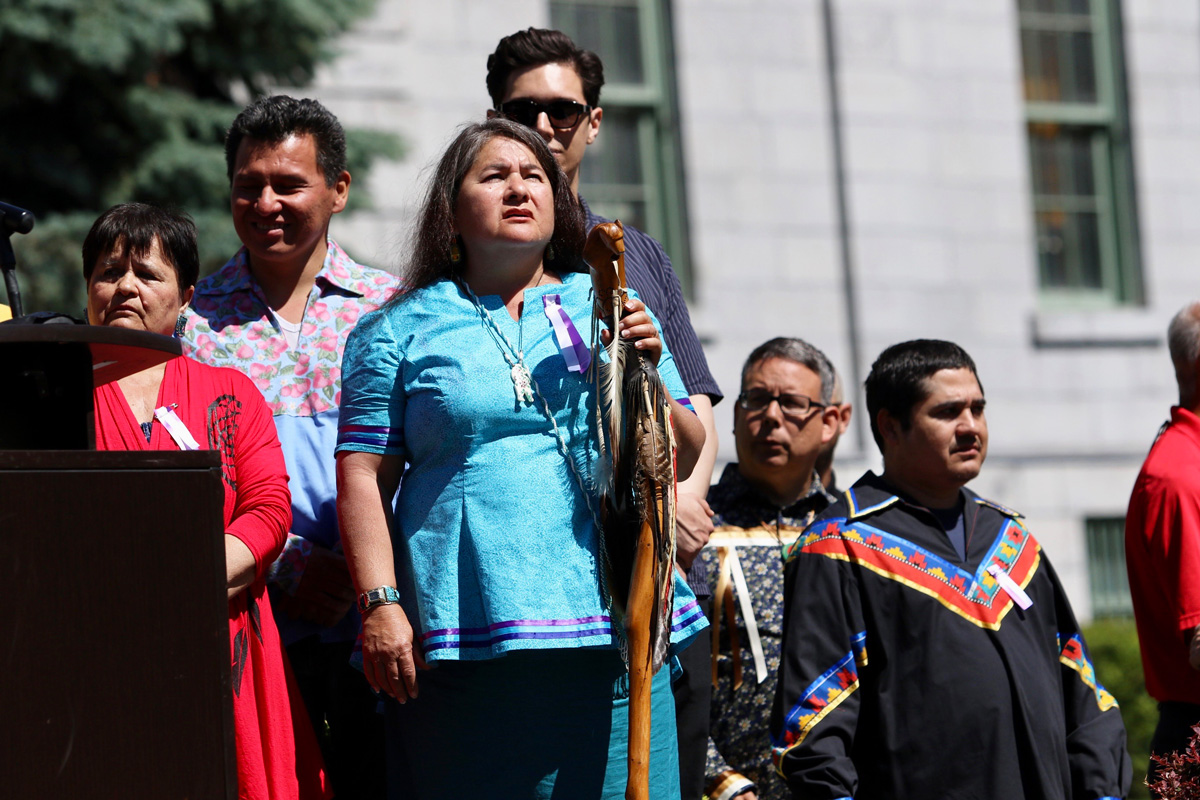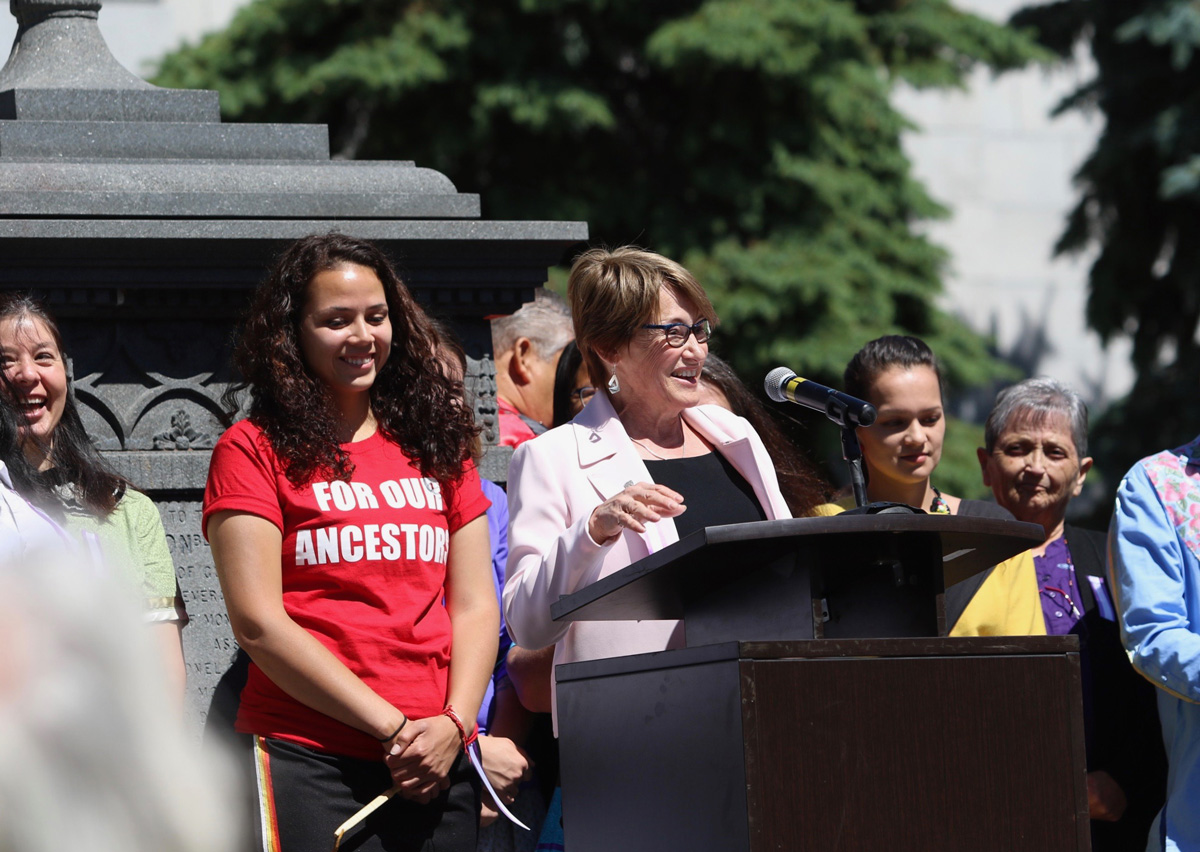
It was a perfect day for a flag raising.
Against a pristine blue sky the purple and white of the Haudenausaunee flag rippled over the iconic Arts Building for the first time.
“Welcome to this flag raising ceremony on Canada’s National Indigenous Peoples Day, which is also the Summer Equinox,” said a smiling Kakwiranó:ron Cook, Special Advisor, Indigenous Initiatives, in the office of the Provost and Vice-Principal (Academic) at McGill. “The flying of the Hiawatha Wampum Belt Flag at McGill is unprecedented. The flag we raise today is the centuries-old symbol enshrined in the specific wampum belt marking unity and peace between the Seneca, Cayuga, Onondaga, Oneida, and Mohawk nations. We are very pleased to see all of you here on this historic day for McGill and for First Nations in Quebec.”

The purple and white flag will fly atop the Arts building for 24 hours and will return during the McGill pow-wow, scheduled this year for Friday, Sept. 21, 2018.
Clan Mother Helper Chelsea Sunday delivered the Ohén:ton Karihwatéhkwen, or “The Words that Come Before All Else,” known as the Haudenosaunee Thanksgiving Address, offering Greetings to the Natural World.
Bear Clan Matron Louise Wakerakatste McDonald, also known as Mama Bear, reminded those assembled that McGill is situated in the territory of a matrilineal society whose history is encoded in the design of the Hiawatha Wampum Belt.
Principal Suzanne Fortier spoke after an ancestral song sung by Sunday, accompanying the raising of the flag. Several members of the First Nations delegation at the foot of the flag had tears in their eyes at the sight of the flag rising above the Arts Building.
“As a University, we have a crucial role to play with respect to the Truth and Reconciliation Commission of Canada’s Call to Action,” Prof. Fortier said. “We will heed the call in close collaboration with Indigenous communities and our partners, with enthusiasm and humility. In the last academic year, we launched the Indigenous Health Professions Program, a Mohawk-language class, and just last week McGill announced an athletic scholarship for indigenous lacrosse players. I am going to sign up for the language classes.” said a smiling Principal.

“In 2016 I launched a task force on Indigenous Studies and Indigenous Education,” said Provost and Vice-Principal (Academic) Christopher Manfredi. “The final report with its Calls to Action, was submitted one year ago today. That the Hiawatha Wampum Belt flag flies above us today is the result of the insistence by members of the Task Force that the symbolic can be as important as the concrete. It is a testament to our commitment to work together-boldly visible, and immediate while we work to build a better, collaborative, inclusive future.”
“This a big sign of change for us. This means a lot,” said Mike Loft, retired Professor of Social Work. “Usually we see the McGill Martlet flag up high on the Arts Building. But today the Martlet, who has no feet because the Martlet never rests in its search for knowledge, is taking a break. Flying our flag is a sign of recognition and respect, and a renewing of our relationship.”
Also present were Sonny Diabo, McGill’s inaugural elder; Geoffrey Kelley, (BA’81, MA’85), Quebec Minister responsible for Native Affairs; and Mark Miller, (BCL/LLB’01), the Member of Parliament for Ville-Marie — Le Sud-Ouest — Île-des-Soeurs, which encompasses the downtown McGill campus.
View the photo gallery below
